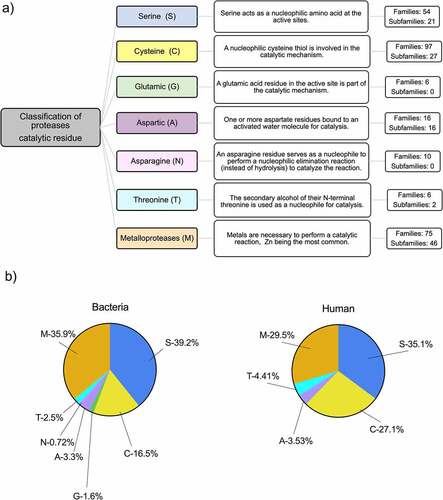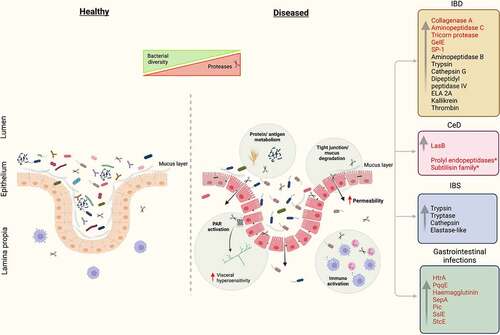Figures & data
Figure 1. Classification and distribution of proteases based on their catalytic site. a) The MEROPs database classifies proteases based on the amino acid at the catalytic site used to carry out the catalytic process. Each group of proteases is identified by the letter of the amino acid that represents the catalytic type. All members are identified and classified based on structural similarities. b) Relative abundance of protease families in bacterial and human genomes, including putative proteases. Serine (S), cysteine (C), glutamic (G), aspartic (A), asparagine (N), threonine (T) and metalloproteases (M).

Figure 2. Proteases implicated in IBD, IBS, CeD and GI infections. In disease-related conditions, proteases induce structural and functional changes in the gut through multiple mechanisms of action, including effects on dietary protein metabolism, mucosal barrier function, neuronal excitability and immunoregulation. Luminal proteases impact GI function by a combination of PAR-dependent and independent effects. Proteases of microbial origin are highlighted in red. *Proteases with therapeutic potential. Figure was created with BioRender.com.

Table 1. Summary of proteases of bacterial and host origin implicated in gastrointestinal diseases.
